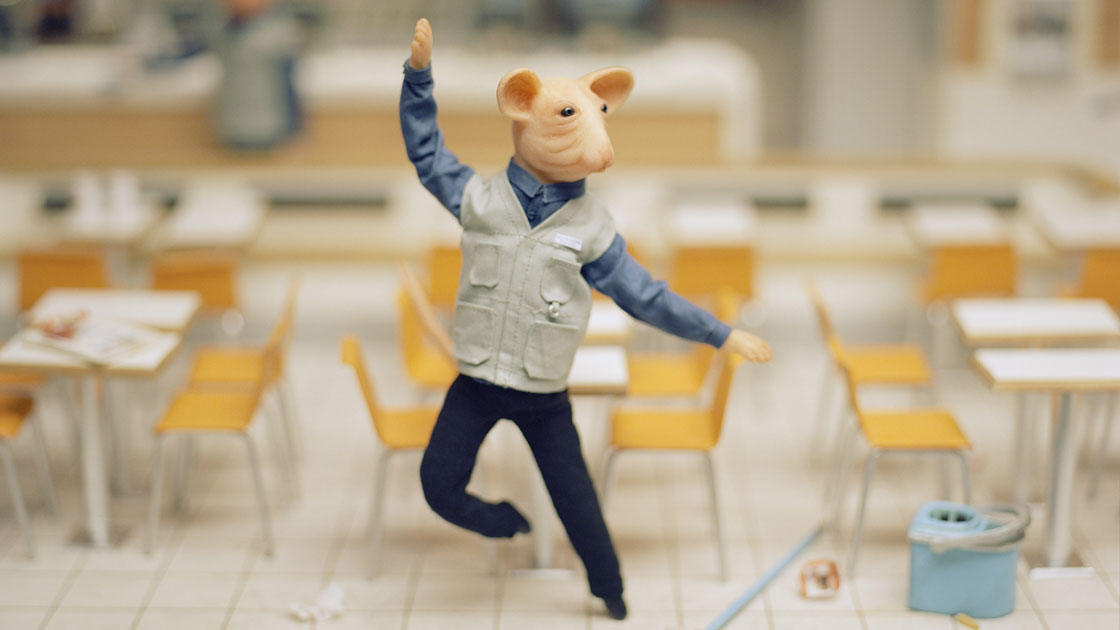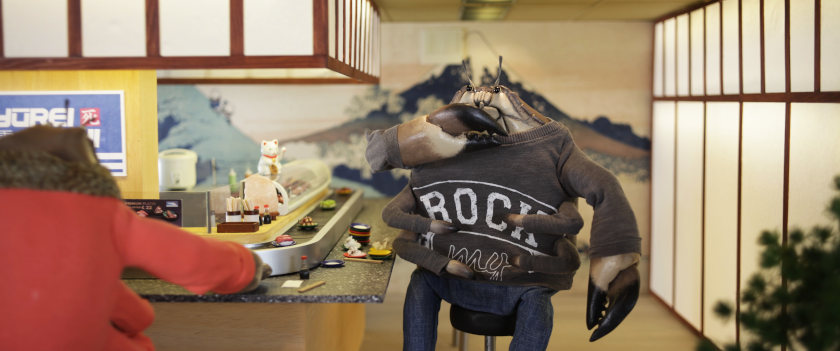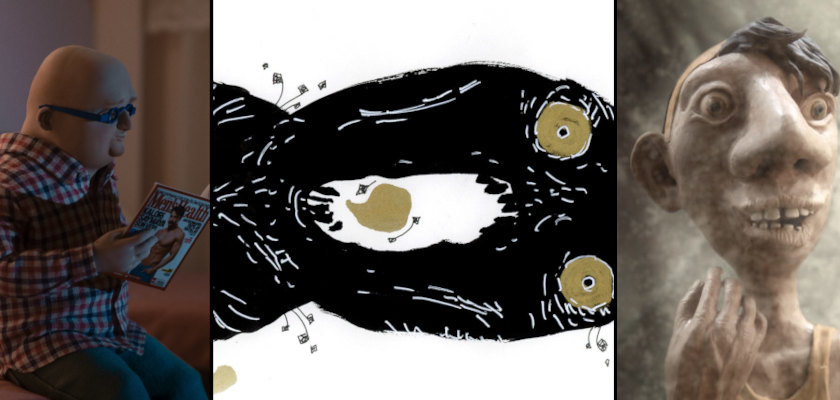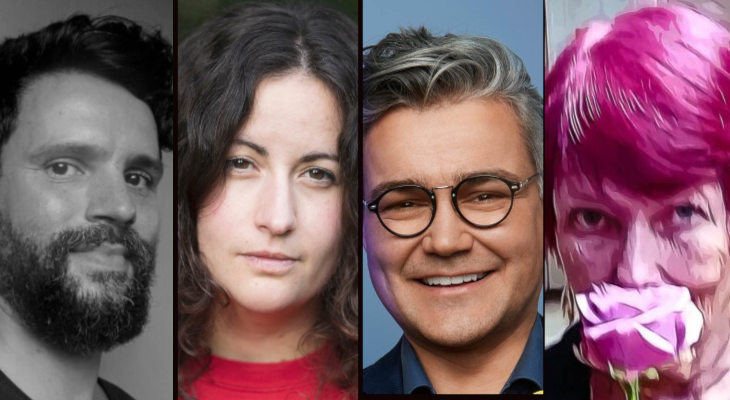'Modern Stop-Motion Fables': Interview with Niki Lindroth von Bahr

Stop-motion animator, writer, and sculptor Niki Lindroth von Bahr recently participated as a jury member at the 2024 Etiuda & Anima Festival (21-26 November, Krakow), with her work honored in a special retrospective programme and artist exhibition on her filmmaking. With an array of shorts and an episode of Netflix’s anthology series The House in her repertoire, the Stockholm-based animator is already a ferocious talent in her field, and a multi-award-winning filmmaker recognized on an international scale.
Her films address a juxtaposition of mundanity and chaos in the human experience, using anthropomorphic animal characters to tell tales of existentialism, modern fables, and apocalyptic futures. Lindroth von Bahr’s works also often incorporate musical sequences into their storytelling, having worked with artists Hans Appelqvist and Jarvis Cocker in films such as 'Something to Remember' (2019), 'The Burden' (2017), and her section of the TV stop-motion anthology 'The House' (2022).
Following her stint as a member of the Etiuda & Anima Festival animation jury during their 2024 edition, Zippy Frames spoke to Niki Lindroth von Bahr about her work, creative motivations, and time in Krakow for the festival.
ZF: You’ve just finished participating in the 31st Etiuda & Anima Festival as a member of their animation jury, how was your experience of the festival? Could you share with us some highlights?
NL: I had a lovely time at the festival. The films were great and it was so nice to meet up with animation colleagues again. I've spent a few years with small children at home, so this was a wonderful opportunity to finally be a part of the international animation scene again. The absolute highlight was Peter Lord’s interesting and inspiring masterclass.
ZF: Your work was celebrated at the festival this year with a retrospective of your filmmaking and a special exhibition, could you talk a little bit about how the exhibition was curated?
NL: The exhibition featured a collection of sets and puppets from my short films, which were exhibited along with art prints. It's a nice thing for the audience to be able to "meet" the characters in real life - such a different experience from watching the films!

Niki Lindroth von Bahr Etiuda & Anima exhibition
ZF: In your filmmaking, you work mostly with stop-motion animation to tell your stories. The medium is having a moment just now, with the stop-motion feature film 'Memoir of a Snail' winning big at festivals worldwide, specially programmed seasons at institutions like the BFI Southbank taking center stage, and animation festivals more popular than ever with international audiences. What is it about stop-motion animation that you think is so special? Why does it fuel your creativity?
NL: Stop motion is in many ways a completely hopeless way of working. The technology is so challenging, expensive, and time-consuming - it's ridiculous! But the result is always priceless. Somehow, you can feel all of that hard work in each frame of the film. Putting all of that time and effort to making art feels very rare these days.
ZF: You also tend to use animal characters in your storytelling, with all of your short films and your episode of 'The House' harboring a variety of anthropomorphic creatures. Can you talk about this sustained narrative choice?
NL: I think it's about creating a silly, cute filter on top of the stories I tell, which are often quite dark and unpleasant. A bit like modern fables. I also want to emphasize that my characters could be any of us, exposed to a certain situation or atmosphere. Deep down we're all just animals desperately trying to blend in with civilization.
ZF: The world-building of your filmmaking is exceptionally intricate, holding a mirror to our own through thoughtful rumination on human nature. How do you get into the minds of your characters when writing? What questions do you ask yourself to create your complex animated worlds?
NL: I always start my stories with a certain environment, rather than focusing on my characters; a place that interests me for some reason. Usually, this place says something about our time, like the half-renovated house in 'The House'. I wanted to make a surreal thriller with the overheated housing market as a backdrop, which is rather horrifying in itself.
ZF: Music obviously plays a huge part in your filmmaking, ranging from musical theatre-style dance numbers, to traditional folk singing, to Jarvis Cocker! What is it that draws you to music as a cinematic technique? How do you feel your visual style is suited to musical sequencing?
NL: To me, music is a very powerful weapon that can easily backfire if you use it carelessly. I'm interested in keeping the audience a bit unsettled about what they are watching, that's why I didn't use music at all in my first films. For those films, there were no guidelines for what you should feel. When making 'The Burden' and 'Something to Remember' I wanted to give the music a leading role, but also to work as a contradiction to the images that go with it. Cheerful musical scores illustrated with soulless environments and existential anxiety.

The Burden
ZF: With films such as 'The Burden' and 'Something to Remember' in mind; do the films come first, or do the songs? What is the process like in creating these musical numbers?
NL: I always work with the extremely talented composer Hans Appelqvist. It's a great thing to know each other so well, he knows how to challenge me and I know how to challenge him. Hans is present in my work from the very beginning and we start to develop the music already at the storyboard and animatic stage. It's necessary since I'm adjusting the edit and making the dance routines to the real scores.
ZF: You already have a fantastic filmography under your belt, having made films for nearly 15 years. How would you say your practice has evolved over these years of filmmaking - would you say your creative motivations are different to when you first started?
NL: There’s a big difference in my relation to work at this time compared to 10 years ago since I now have two small children. Trying to manage a quite demanding life as a freelancing artist and the challenges of family life is in all honesty not easy. You need to be very efficient with the limited time you have, back in the day I could work all hours of the day if needed but that is not possible anymore. But my original motivation has not changed, making my films and art is just something I need to do to feel the meaning of life. No matter the costs, unfortunately.
ZF: Aside from filmmaking, you are also involved with sculpture and costume design, having designed costumes for the likes of David Bowie and Fever Ray in your past work. Are your inspirations and motivations for this kind of work different from animation, or does your creativity work in tandem with these contrasting mediums?
NL: It’s wonderful to be able to vary your work, I do recommend it! Especially when animated films tend to be rather heavy and time-consuming projects. Making sculptures and costume design can blow off steam from lengthy productions. I also love to sometimes jump in and collaborate with other artists, that gives me some rest from my universe of ideas and inspires me to think in new directions.
ZF: And what about future projects, can we expect anything new from you anytime soon? Can you share any details?
NL: I’m just in the production start of a new short film called 'The Rose'. It's a sort of nightmarish visit to a large, international airport, with many similarities to Limbo in The Divine Comedy and Hade's Kingdom of the Dead.

The Rose
The financing has been taking forever but we are finally good to go. Stay tuned! In a year or so, haha!
contributed by Heather Bradshaw









